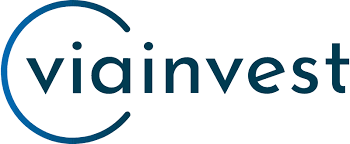Loans
How to Finance Home Improvement Projects That Can Increase the Value of Your Home

How to Refinance a Car Loan: You Could Save Big in Just 6 Simple Steps
Home renovations that offer a high return on investment can make your house more enjoyable to live in, and they are often a smart money move when it’s time to sell. If you have a few upgrade ideas but you’re worried about how to pay for it all, don’t fret — you’ve got options.
From home equity products to personal loans, there are several ways homeowners can go about financing home improvement projects. To ease your money anxiety, we’ve compiled a list of different financing options. Plus, we put together a rundown of home improvement projects that offer the highest return in case you’re wondering which home projects to prioritize.
In this article
- Financing home improvement projects: What are your options?
- A word of caution on borrowing from your 401(k)
- 5 home improvement projects with the highest return on investment
- FAQs
- The bottom line
Financing home improvement projects: What are your options?
If you have enough equity in your home, you may be able to borrow from that equity to pay for home projects. Homeowners without equity might consider turning to other options like credit cards or personal loans. Here are a few ways to finance your next home improvement project:
Home equity line of credit (HELOC)
Home equity lines of credit are revolving credit lines that let you borrow against your home’s equity. You get a credit limit that you can use and pay back as needed. Lenders look at factors such as your credit score, home equity, and debt-to-income ratio when deciding whether to approve you for a HELOC.
You will likely have the best shot at getting approved with a credit score greater than 700, and you may need at least 15% to 20% equity in your home with a debt-to-income ratio below 43% to qualify.
Get The Cash You Need Without Leaving Home
 Visit Figure
Visit Figure
Figure Benefits
- 100% online application and appraisal
- Easily see your rate in a few minutes
- Use to consolidate debt or finance your next project
- HELOC rates start at 3.00% APR
Visit Figure
Home equity loan
A home equity loan, which is sometimes referred to as a second mortgage, is another way to borrow from your home’s equity, except you get cash in a lump sum and make installment payments over a loan term that could be as long as 30 years.
Lenders typically consider your credit score, debt-to-income ratio, and home equity to set your loan terms and interest rate. You might be able to borrow up to 85% of your home’s equity, depending on your income, credit history, and the value of your home.
The Smart Way To Tap Into Home Equity
 Visit Hometap
Visit Hometap
Hometap Benefits
- Alternative to traditional home equity loans
- No loans or monthly payments
- Pay off debt or fund renovations
- Free home estimate
Visit Hometap
Cash-out refinance
A cash-out refinance is when you refinance your home for more than the home loan balance and take out the difference in cash. For example, if you owe $400,000 on your home loan, you could refinance for $425,000 and potentially use $25,000 for renovations.
When considering whether to approve you for refinancing, lenders will also look at your DTI, credit report, and your home’s value. Keep in mind that refinances are not free — closing costs for a refinance could add up to $5,000 on average, according to Freddie Mac.
Whether or not a cash-out refinance makes sense to pay for home renovations depends on the interest rate you qualify for and the fees involved. If you’re considering a refinance, DadeLoan’s roundup of the best mortgage lenders could help you shop around for offers.
0% APR credit card
Credit cards with a 0% APR introductory offer could be another option to finance home renovations. Typically, 0% APR credit card introductory offers can last for anywhere between 12 to 24 months, and interest increases the standard rate after that period. For example, the Chase Freedom Flex offers 0% APR for 15 months on new purchases (then 14.99% to 24.74% (variable)).
Say you buy eggshell or beige paint in bulk on a zero-interest card because they’re the best paint colors to sell a house. If you repay the balance before the 0% APR period ends, you essentially got an interest-free loan. These types of credit cards are usually geared toward borrowers with good credit or better, so you could potentially need a good or excellent credit score to qualify.
Seriously Powerful Cashback Card
Chase Freedom Flex

Chase Freedom Flex
Learn How to Apply
Intro Offer
$200
Annual Fee
$0
Rewards Rate
up to 5% cash back
Benefits and Drawbacks
Benefits
- $200 sign-up bonus
- Up to 5% cash back on spending
- 5% cash back on grocery store purchases (up to $12k your first year)
- Lyft and DoorDash perks
Drawbacks
- Has foreign transaction fee
Card Details
- Earn $200 cash back after spending $500 on purchases in the first 3 months, plus earn 5% cash back on grocery store purchases (not including Target or Walmart; up to $12,000 in the first year)
- 5% on rotating quarterly categories (on up to $1,500 spent) and travel purchased through the Chase Ultimate Rewards portal; 3% at restaurants (including takeout and delivery) and drugstores; and 1% on all other purchases
- Intro purchase 0% offer: 0% for 15 months then 14.99% to 24.74% (variable)
Personal loan
A personal loan is an installment loan that borrowers can get from online lenders, banks, or credit unions. Terms for installment loans typically range from one to seven years, and these loans may offer low interest rates compared with credit cards and other lending products. Having good credit could potentially help you get approved for the best personal loans on the market, though lenders may also consider other factors besides your credit score.
However, certain lenders, such as Avant or LoansUnder36% may be willing to work with borrowers who have less-than-perfect credit. Besides considering your credit, lenders will look at your income and DTI to make sure you have enough money to keep up with payments
Borrow up to $35K with flexible terms
 Visit Loans Under 36%
Visit Loans Under 36%
Loans Under 36% Benefits
- Loan options up to $35K
- Get matched with loans that fit your specific needs
- No application fees or minimum credit score
- Receive your loan as soon as the next day
Visit Loans Under 36%
Buy Now, Pay Later: Is Pay Over Time a Smart Money Move?
FHA Title I loan
Federal Housing Administration Title I loans are government-backed home improvement loans that you could use to finance repairs and renovations that improve your home’s usefulness. Funds could potentially be used on items like a new dishwasher or oven that make your home more livable. You cannot use an FHA Title I on non-essential “luxuries” like a pool, hot tub, or sauna.
FHA Title I loan amounts go up to $25,000 for a single-unit home, and the maximum loan term is 20 years. There’s no minimum equity requirement, which might make this ideal for new homeowners who don’t yet have enough equity to qualify for a HELOC or home equity loan.
The FHA Title I loan also has no minimum credit score requirement, but lenders will check your credit to ensure you’re not a high credit risk. The government doesn’t set the interest rate; instead, that’s something you’ll work out with the FHA-approved lender.
A word of caution on borrowing from your 401(k)
If you have money sitting in a 401(k), you may be tempted to apply for a 401(k) loan to finance home projects, but there are some factors to consider before doing so.
Money taken out of your 401(k) cannot earn compound interest, which means you could miss out on potential account gains during the loan term. Compound interest is when interest earns interest, and if left to work its magic, this could potentially grow your nest egg.
If you’re unable to pay back the 401(k) loan, the loan could also be taxed as a distribution, and you could face a 10% tax penalty if you’re under the age of 59 1/2. Ultimately, whether you decide to borrow from your 401(k) is a personal choice, but you should be fairly certain you can pay the money back before borrowing because not doing so could be costly.
5 home improvement projects with the highest return on investment
Wondering which home projects pay off? Below are the renovations where homeowners recoup the most of their investment at resale, according to the Remodeling 2020 Cost vs. Value Report (www.costvsvalue.com).
- Manufactured stone accents: Adding stone veneer to the outside of a home costs $9,357 on average and offers the highest pay off, with homeowners recouping 95.6% of that cost when the house is sold.
- New garage door: Replacing the garage door costs $3,695 on average, and sellers recoup 94.5% of that cost.
- Minor kitchen remodel: A minor kitchen remodel that includes painting the walls and replacing cabinet doors, drawer fronts, hardware, appliances, and flooring costs $23,452 on average, and homeowners recoup 77.6% of the cost.
- Fiber-cement siding: Fiber-cement siding is a durable material made of wood and cement used on the outside of the home that costs $17,008 on average to install, and homeowners recoup 77.6% of the cost.
- Vinyl siding: Vinyl siding is made of polyvinyl chloride, or PVC, and costs $14,359 to install on average, and homeowners are able to recoup 74.7% of their investment when they sell
(Note: The data above is subject to copyright by 2020 Hanley Wood, LLC. Complete data from the Remodeling 2019 Cost vs. Value Report can be downloaded free at www.costvsvalue.com.)
Keep in mind that the above home remodeling costs and recoupment averages are estimates. Costs and return on investment might vary.
FAQs
What’s the best way to finance a home improvement project?
The best way to finance a home improvement project depends on your financial situation.
If you’ve lived in your home for many years and have a lot of equity in the home, a cash-out refinance, HELOC, or home equity loan could be an affordable way to borrow. That’s because loans secured by property, such as your home, could potentially offer you a lower interest rate than what you might get on an unsecured product such as a personal loan or credit card.
Personal loans or FHA Title I loans might be an option for people who don’t yet have enough equity to qualify for a home equity loan or HELOC. Unsecured personal loans don’t have to be backed by your house, and FHA Title I loans don’t have a minimum equity requirement.
Borrowers who can qualify could also choose to finance a home improvement project with a 0% APR credit card. This could potentially be a good option, provided the card balance is paid off before the 0% APR offer ends and standard interest kicks in.
If you’re wondering how to get a loan, the best way to find the right home improvement financing option for you is shopping with multiple lenders and comparing terms and loan rates.
Can you use a home improvement loan for anything?
Most lenders typically don’t usually set rules for how you can use loan proceeds. After your loan is funded, you’re pretty much free to use the money for anything you want unless otherwise stated. That said, it’s important to review the loan terms before you apply.
The FHA Title I loan backed by the government is one that comes with some fine print.
FHA Title I loan funds have to improve or enhance your home in a way that’s necessary. This means you can’t use funds for luxuries like a pool.
Instead, you could use the money on projects or appliances that make the home more livable or accessible. Examples include purchasing energy-efficient appliances or installing accessibility ramps.
What’s the difference between a home equity loan and a HELOC?
Both a home equity loan and a HELOC let you borrow from the equity in your home, but there are key differences. A home equity loan is an installment loan where you get a lump sum that must be repaid in installments over a fixed loan term.
A HELOC is a credit line that you draw from and pay back as needed. Depending on the terms, the HELOC might have a set draw period where you can draw funds, followed by a repayment period where you need to pay the balance back. Make sure to speak with your lender about the repayment terms and fees of the HELOC before you apply.
The bottom line
Whether you’re going the DIY route or working with a contractor, there’s no shortage of loan options when you want to finance home improvement projects. If you’re not sure how much a repair or renovation will cost, lines of credit, such as a credit card or HELOC, might provide the flexibility you need.
If you know exactly what it’ll cost you to replace siding or install a deck, a fixed-rate installment loan can offer a lump sum and a set monthly payment schedule. The best way to land competitive financing is by shopping around and comparing multiple offers. With several offers in hand, you can decide the most cost-effective and convenient way to finance your project.
Get prequalified as early as today, no documents required
 View rates
View rates
New American Funding Benefits
- No documents or registration required
- Handy refinance payment calculator
- Massive variety of refinancing options
- BBB A+ rating
View rates
Are Solar Panels Worth It in 2021? The 5 Factors to Consider
Unmasking Online Deception: An In-Depth Social Catfish Review
Purple Garden Psychics – ($1/Min) FREE Trial Offers, Real Experience & Benefits And More

Refinancing an Auto Loan: How to Know If It’s a Good Idea

Reverse Mortgages Pros and Cons: Ripoff or a Good Idea?

8 Ways it Just Got Easier to Achieve Student Loan Forgiveness
Unmasking Online Deception: An In-Depth Social Catfish Review

Orchard Bank Credit Cards | NOT a Scam!

PrivacyGuard Review

How to choose where to study as an international student


